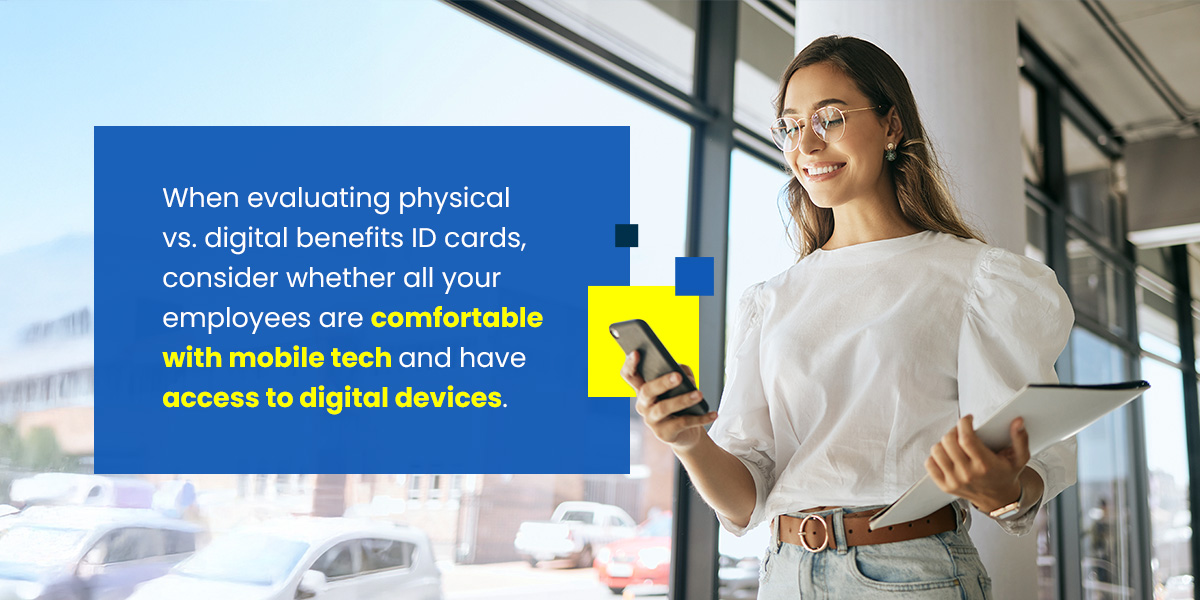Blog
Physical vs. Digital Benefits ID Cards: Which Is Better for Your Organization?Choosing between physical vs. digital benefits ID cards is a strategic decision. Understanding the pros and cons of physical vs. electronic IDs can help you choose solutions that make your organization more efficient and cost-effective. The Case for Physical ID CardsFor decades, plastic ID cards have been the gold standard in benefits administration. That is because physical benefits ID cards offer plenty of advantages:
However, it is important to remember that physical cards come with some drawbacks, too. You need to order and mail them to everyone on your team. If they are lost or if you need to change a card, these cards need to be reordered and mailed, which can take time and add to your costs. The Advantages of Digital Employee ID CardsIn a mobile-first world, digital employee ID cards are becoming very popular, especially with younger workforces. These electronic cards are typically delivered through secure online portals or integrated mobile apps and come with several benefits:
Despite the benefits, digital-only models aren’t without challenges. For example, not all employees have access to smartphones, which are required for digital IDs. In addition, not all healthcare facilities have the software and hardware to read digital cards. Factors to Consider
When evaluating physical vs. digital benefits ID cards, consider whether all your employees are comfortable with mobile tech and have access to digital devices. Whether you are using digital or physical cards, make sure you have secure ID card technologies or secure storage for physical cards. Ensure you are meeting HIPAA or other regulatory requirements when managing and distributing ID cards. You may want to survey employees to find out more about their preferences and needs. Also, consider whether one option will reduce administrative costs for your organization and make your onboarding and employee systems more efficient. Which Is Better?There’s no doubt that the shift toward mobile ID card solutions is natural, as many organizations work digitally, and employees grow used to accessing everything from their phones. That doesn’t mean you need to make the switch, though. Many organizations that work with our team at Web Integration, LLC use a dual approach. Others switch to digital or stay with physical cards exclusively. If you need help, contact us today to learn more about our physical and digital ID card solutions for insurance companies and healthcare providers. |